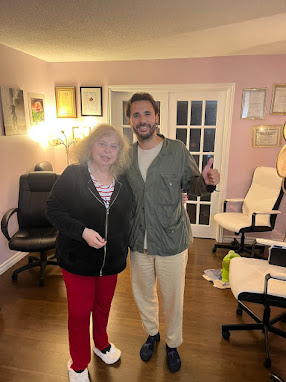Vocal Science - Attention Throat Cancer Survivors!
Had Your Voice Been Compromised Due To The Above?
Unfortunately, after being diagnosed with such a nasty disease like throat cancer and then, as a consequence, having to undergo chemotherapy and radiation treatments, the voice could be very easily compromised and the vocal anatomy could also end up damaged.
The medical doctors, in this case, are usually trying to convince their patients to be grateful that they survived (never mind their damaged voice or anything else which ended up being damaged for that matter).
They usually say: “Be grateful that you are alive and don’t worry about your voice”.
It’s easy for them to say, but the person who use to speak (or even sing) with a normal voice, feels quite inadequate, as he/she has a communication breakdown via a raspy/hoarse voice, or sometimes, even no voice at all.
Nevertheless, that person is affected with everyday life challenges, not to mention work challenges and… even the loss of the latter due to the inability or limitation of the voice use. Confidence and self-esteem are also greatly compromised and the person, most of the times, feels as “good” as an invalid sitting in a wheelchair.
Could that person be helped?
Perhaps… but definitely not by the doctors, as they (in a manner of speaking) had already “signed the patient’s sentence”. So now the throat cancer survivor has to look for alternative means…
Let’s say that the driver of the car can not start that car the regular way (with the ignition key at the front). So we have to find a way how to start that very car from the back of the car (the trunk perhaps…?) Once its done whichever way, nobody would know the difference; and that is the name of the game…
So in a case of a person in question (throat cancer survivor), it is clear that his vocal anatomy is damaged with all the chemotherapy and radiation treatments he/she had undergone.
So… how can we fix it then, you, my reader, may ask?
The answer is that we, most likely, cannot fix the vocal anatomy per say, but what we could do is to re-channel one’s voice to the different set of muscles which, luckily, had not been compromised by the whole ordeal.
In fact, the voice placed in those, what we call “vocal chambers”, will (in the final analysis) sound better - more clear, more pronounced and announced, as well as more amplified then even the old voice!
How easy is this to achieve, you may wonder?
The answer is: NOT EASY AT ALL!
First of all, the person really needs to want it.
Second of all, the person has to be prepared to work hard and smart at the same time.
Third of all, the person needs to understand and accept the learning curve (nevertheless, the ups and downs… could be nearly all the way through)
And lastly, the person has to be very much so prepared for the “emotional roller-coaster” which, for some people, it is not easy at all.
In order to re-channel the damaged voice, I need to really “engage” to the person’s “very being”, so to speak.
I call this act a connection between me and my patient “with the umbilical cord”.
And nevertheless, we will have to stay “connected” throughout almost the whole process, until I feel that my “baby” is able to “breathe, walk and talk on his/her own”.
in 1999, our major news paper, Toronto Star, had declared, “It is not as easy as it sounds” and also mentioned that the whole process is “not for the faint of heart”…
Indeed so!
So if you are serious about regaining your voice, and thus reclaiming your life, please consider it if you feel that you have what it takes.
However… GOOD LUCK TO YOU ALL!
Thank you for your time and reading the above information!
We hope that the above information may be helpful for your present and future voice/vocal development.




Comments
Post a Comment